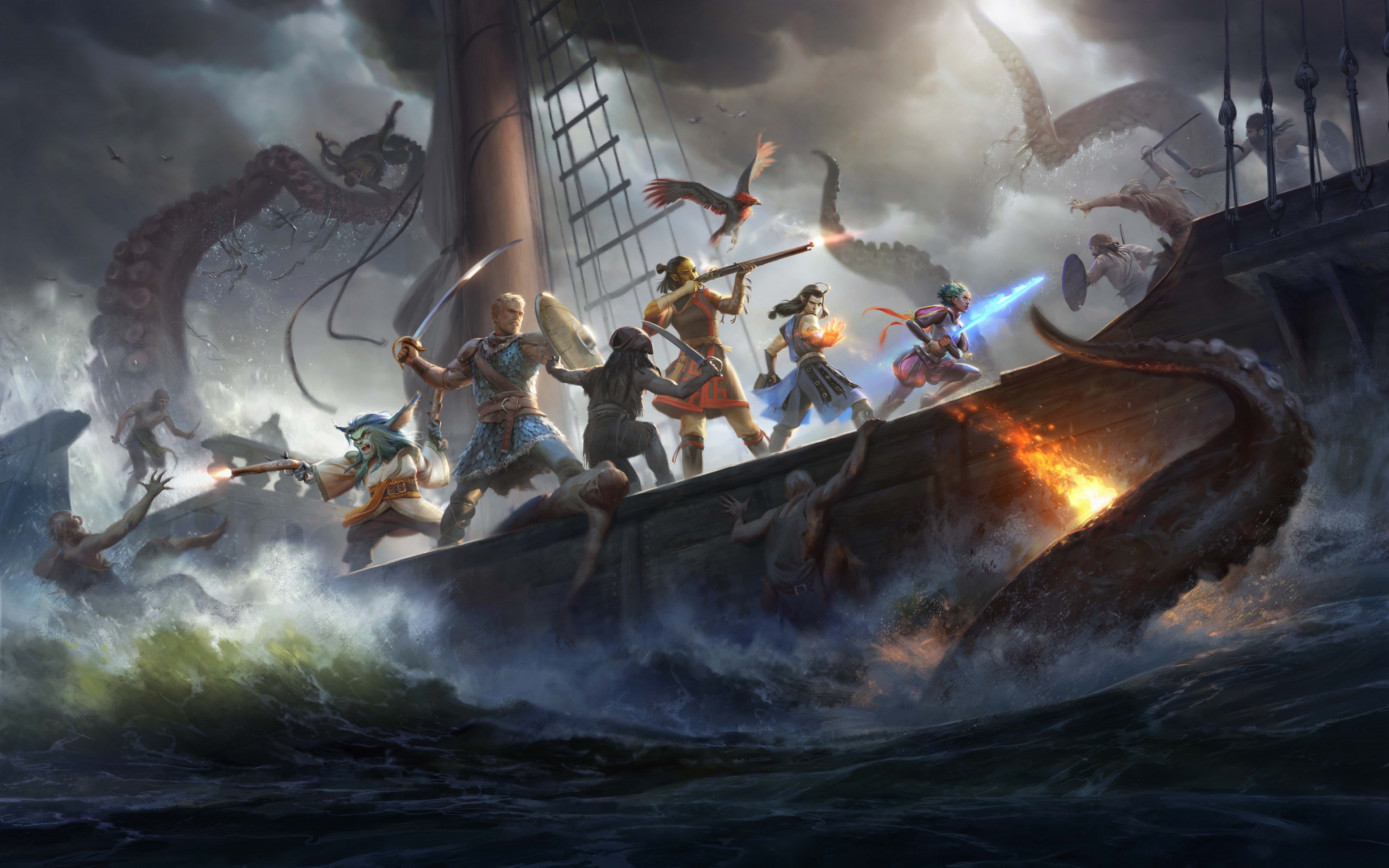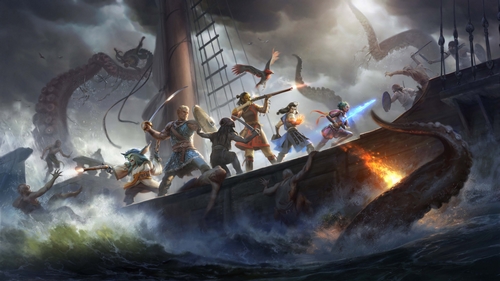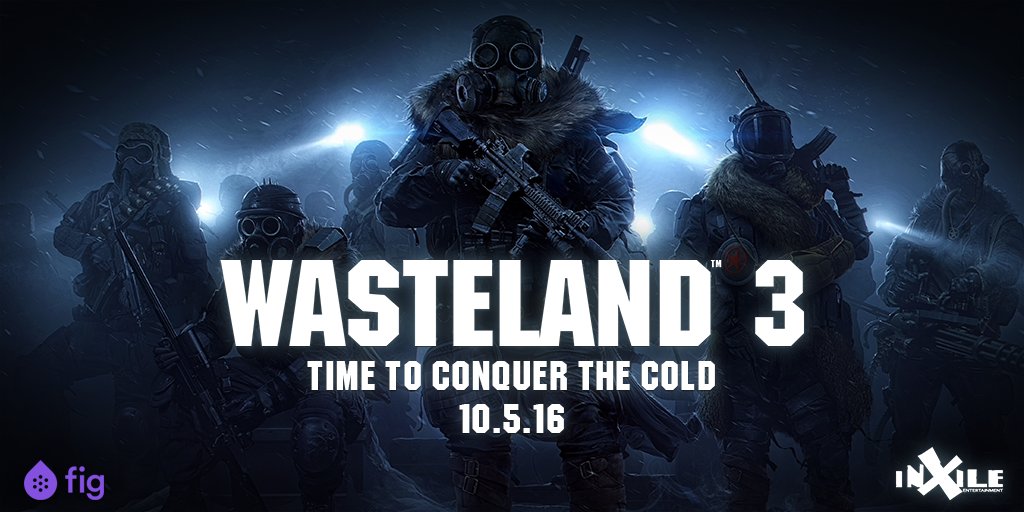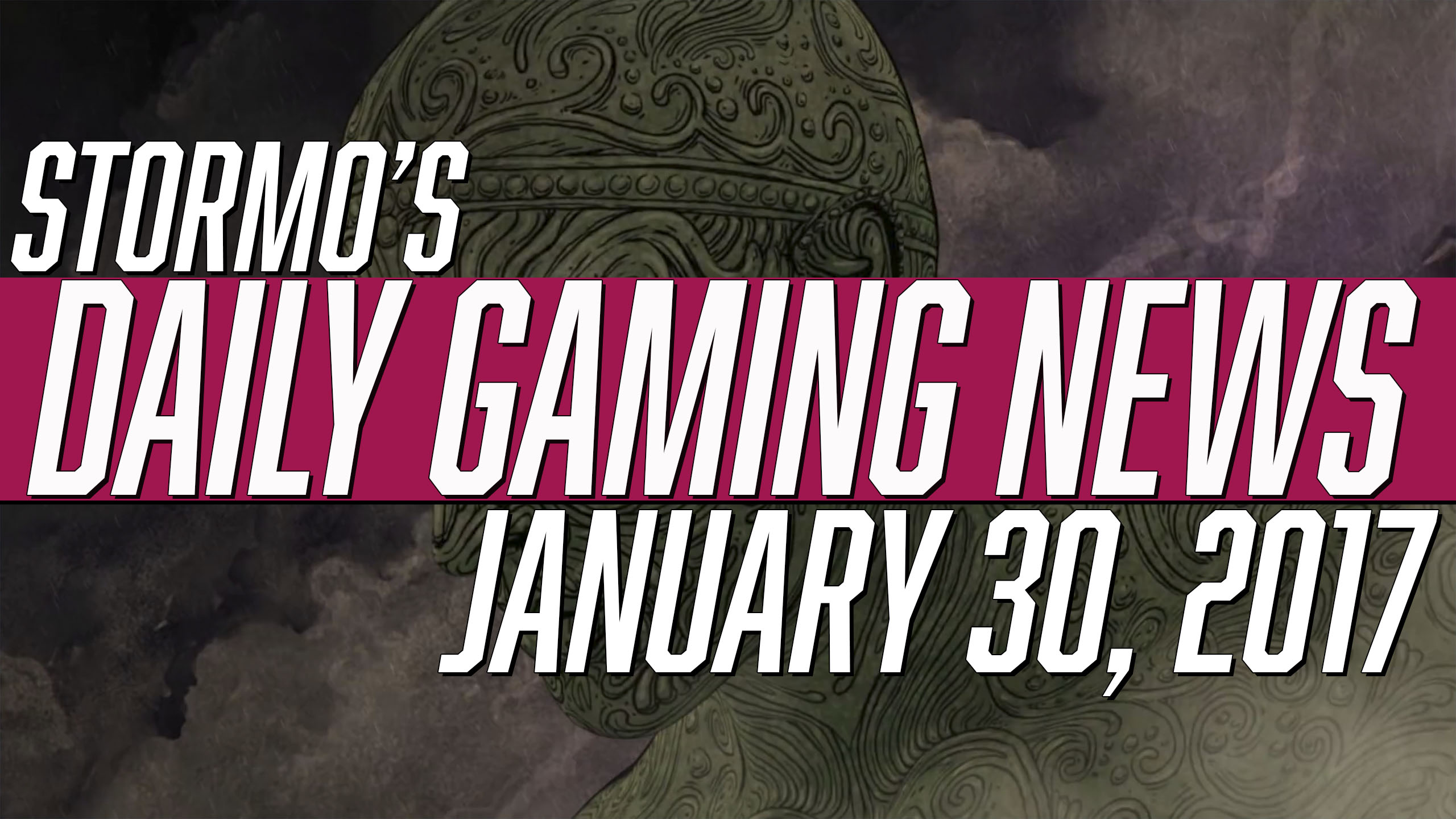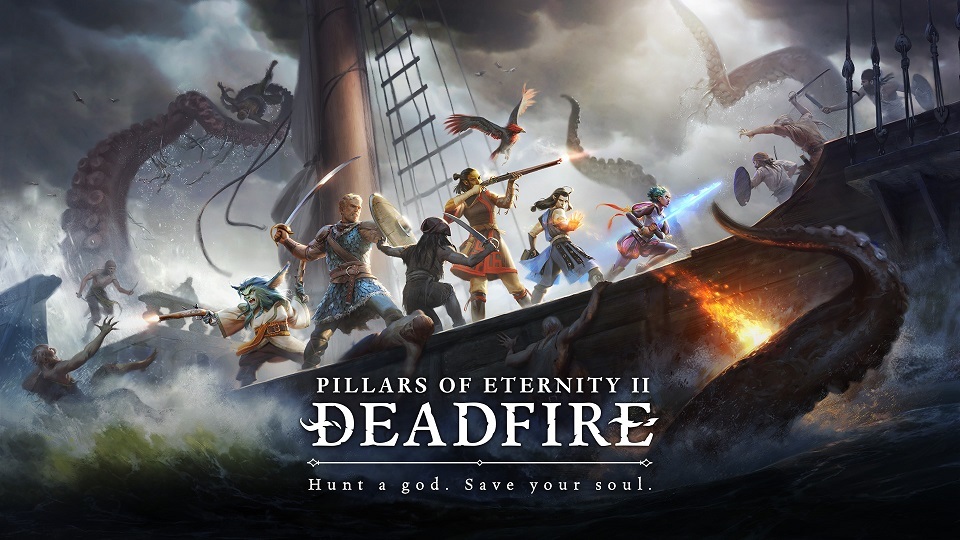
Pillars of Eternity was both an overnight and lasting success for Obsidian Entertainment. It smashed through its goals when it went live on Kickstarter, was met by critical acclaim and commercial success, and has subsequently been attributed with saving developer Obsidian Entertainment from the brink of death in the game’s documentary. Nobody was shocked when Obsidian announced that they would be returning to crowdfunding to fund a sequel, this time through the newly formed Fig.co crowdfunding platform, but it was unlikely that many expected the sequel to smash through its goals even faster than the original and set a new record on Fig.
After Joseph got to take a look at a current build of the game earlier in the year, I got the chance to talk with Obisidian Entertainment Producer Katrina Garsten about her experiences running Pillars of Eternity II: Deadfire’s Fig campaign, maintaining ownership of your own IP and more.
Andrew: Now, the way Fig runs is a bit different to Kickstarter, allowing direct investment into the project with a portion of revenue paid back to investors. Does this influence what is required for Deadfire to be a success within the studio?
Katrina: Having investors for Deadfire does not influence if the game is considered a success within the studio. We were interested in Fig because it had the investment side to it along with the usual backers and reward tiers, but initially told ourselves we would make this game whether we crowdfunded it or not. The most important factor for Deadfire‘s success is the responsiveness and feedback from our backers, since they play a big part in suggesting balance changes, tuning, and much more. In short, if the backers are happy with the game, we consider Deadfire a success within the studio.
Andrew: What do you think was the most successful part of Deadfire’s campaign and what was the most difficult part of it?
Katrina: I think the most successful part of Deadfire’s campaign were the stretch goals we planned out. When we discussed what to include for our stretch goals, we wanted to include things that the development team was just as excited about, and I think it went over really well. A ton of our backers got the word out, upped their pledges, and cheered us on to get to that next milestone. In the end, we didn’t hit all of our stretch goals (believe me, I wanted sea monsters and fishing too), but we added so many awesome features to the game because of it.
The most difficult part of the campaign was figuring out what content to add as we hit the halfway point. We needed to determine what would appeal to potential backers, and keep existing backers interested. Additionally, it was important to not promise something we couldn’t deliver, so we also needed to consider what was realistic for the time frame and budget we had. In the end, we unveiled ‘Fulvano’s Voyage’, which added ten new locations to the Deadfire Archipelago. These areas are already in the game and waiting for players to discover.

Andrew: If you had your time again, is there anything you would change during the campaign?
Katrina: Honestly, I don’t think there is anything I would change about the campaign. I am so happy with the results, and I think the backers will be too when the game is released.
Andrew: I’ve always been personally interested in just how well add-ons perform during crowdfunding campaigns. How much extra funding did Deadfire receive from this source and what was the most selected add-on from the campaign?
Katrina: We were very pleased with how well our add-ons attached, both as bundles within backer tiers and as a la carte purchases, throughout the campaign. Having our backers engage with our add-ons helps tell us we’re doing something right in terms of giving our customers what they want, and that’s goal number one for us with anything we do.
Andrew: Thanks to crowdfunding you’re able to maintain ownership of your IP, as opposed to the norm with more traditional funding methods. What is it like working on a project where you know you’ll maintain ownership of the IP after it’s completed?
Katrina: Owning the Pillars IP allows us to expand on the story in any way that we’d like, among many other things. At the end of Pillars 1, we had the creative freedom to completely change the region where Deadfire’s story takes place, and decide what features we could add to make the game still feel similar to the first one, but at the same time give the player an entirely new experience with your ship, ship combat, and the world map. Additionally, it allows us to expand outside of the realm of video games and move the world of Eora to board games and now a pen & paper starter guide.
Andrew: Obviously IP ownership also allows you to do more with the IP than you would with one owned by another studio. We’re now looking at 2 videogames, a board game and a pen & paper starter guide set in the Pillars universe. Where else do you think the IP could expand in the future?
Katrina: I think we could expand the IP out to even more than what you mentioned. In addition to the video games, board game, and pen & paper starter guide, we also have our Pillars novellas, so I think it would be awesome to some day have a comic or full-length book based on the Pillars universe (Note: we do not have a comic or book planned, this is just something that I, personally, would enjoy). Expanding out to more than just video games allows us to capture a wider audience of people who would never typically play infinity-engine RPGs, and we really want to increase awareness of this awesome, niche genre of game.
Andrew: The original Pillars of Eternity used what is now a relatively uncommon method of background creation, utilizing static backgrounds that then had animations and effects layered over them. How difficult is it to rework a background when a change needs to be made?
Katrina: Changing a background is a multi-step process, but it is something that is to be expected during our development pipeline. The artists will load their scenes in Maya, make the necessary changes, and re-render the entire scene as a whole. Depending on the size of the scene, rendering could take anywhere from a few hours to twelve hours or more. The render, when completed, is updated in Unity, and our artists make necessary 3D adjustments in Unity (This could include navigation changes, adding or adjusting light and shadow probes, anchor point adjustments, and 3D object placement). Afterwards, the area designer needs to adjust the scene in Unity if necessary to add loot or NPC behaviors, among other things. Lastly, VFX looks at the re-rendered scene in Unity to make sure no additional VFX changes are needed. All of these adjustments can take multiple days, depending on how significant the background change is.
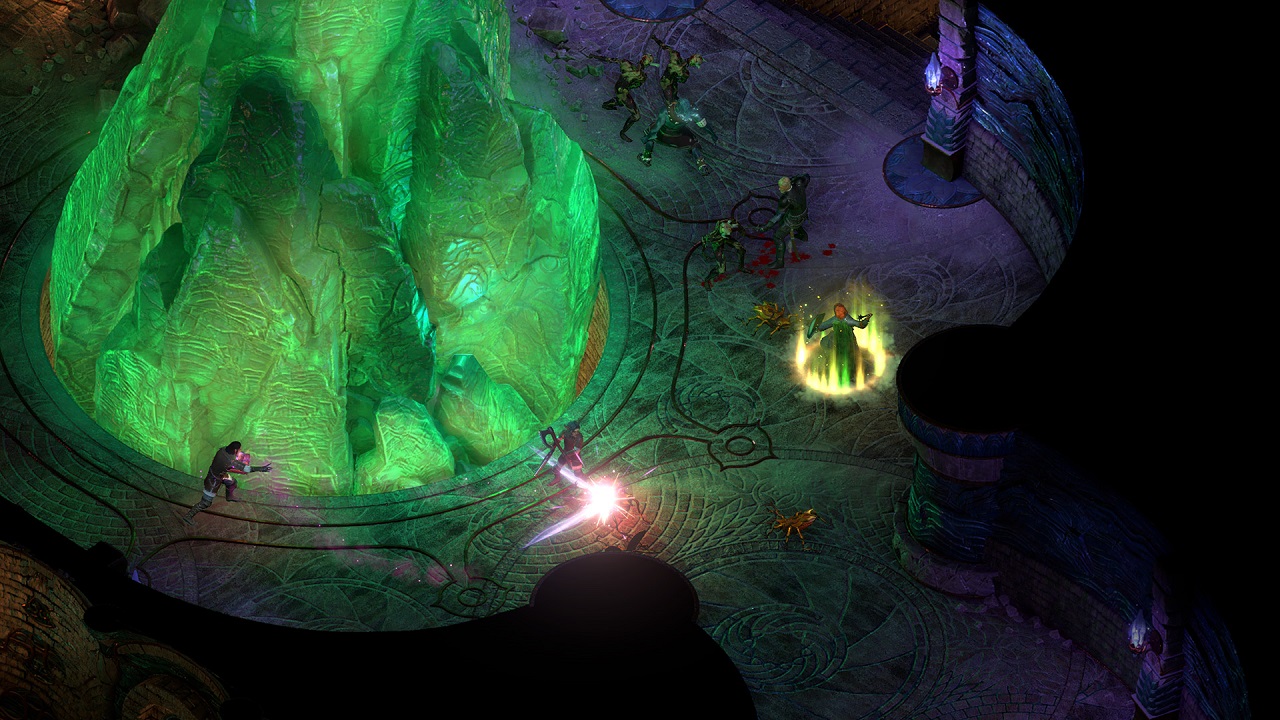
Andrew: In my opinion, and I’m sure people agree with me, character portraits are one of the most important pieces of artwork in an isometric RPG, being your clearest representation of your character. Would you agree with this and do you have a favourite character portrait in the game?
Katrina: I completely agree, as character portraits are something you view throughout the entire playthrough of your game. They need to be visually appealing and also representative of your character, and I think we’ve done a great job in Deadfire with representing all races and classes. There are so many incredible new character portraits added to the second game, which were created by our talented concept artists Brian Menze and Lindsey Laney. If I had to choose favorites, I’d say our new male nature godlike portraits are stunning, and our new female elves are also fantastic. Often times most of the portraits have serious expressions, and for the first time we have a fully smiling female elf, who I typically tend to pick while playing.
Andrew: I guess from a more general viewpoint as well, what did yourself and the art team enjoy working on the most in Deadfire?
Katrina: There were several things that both myself and our artists were really excited to work on. For environment art, we created several new areas that are completely different from anything you’ve ever seen in the world of Eora, and while those are a surprise until the game releases, we were ecstatic to see how the renders turned out. The lighting, layout, and overall atmosphere of every area in our game is so beautiful and immersive, and seeing new renders every day showed us how nicely all of our areas were fitting together. For concept art, I think several of our scripted interaction images were really fun for our concept artist, Matt Hansen, to work on because he had a lot of creative freedom. Every single time I saw him working on one, I always thought “YES! I can’t wait to see what Matt comes up with this time!” and he always delivered. I can’t wait for players to see those same images when Deadfire is released.
Andrew: Pillars of Eternity had a pretty large expansion in The White March and recently ran a survey which confirmed that fans preferred this style of DLC. Was The White March considered a success within the studio and are we likely to see this style of DLC continue in Deadfire?
Katrina: We’re proud of The White March and we still get tons of fans telling us it’s one of their favorite things about Pillars of Eternity. When we think about what sorts of DLC we want to add into a game we’re making, that’s often about balancing what our fans tell us they want with what we feel like we just weren’t able to get to (but really, really wanted to) with the development of the main game. It’s a balancing act, but we think we’ve been pretty good at it in the past, and hope to get a positive response from our fans with our upcoming DLC for Pillars II.
Pillars of Eternity II: Deadfire releases for PC on May 9th, 2018, and will come to Nintendo Switch, PlayStation 4 and Xbox One later in the year.

